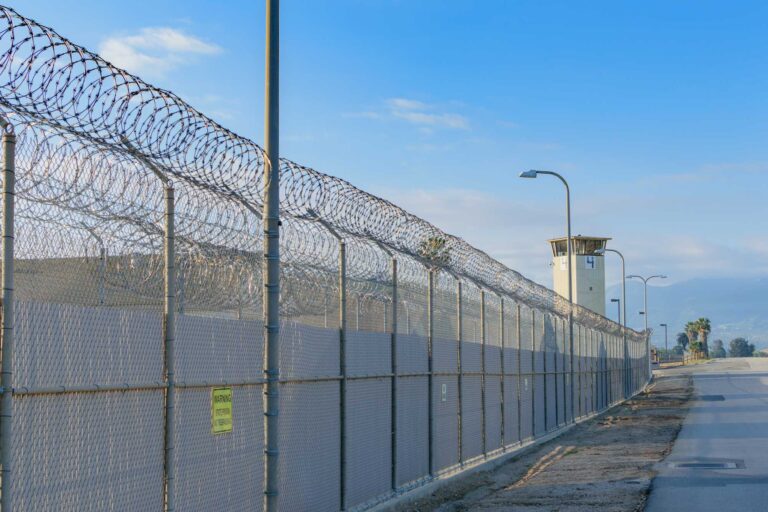California correctional officers are fighting mandatory vaccinations—and the outcome is uncertain. Last month, a federal judge ordered the state to devise a mandatory vaccination plan for prison staff who do not work in prison hospitals, where the federal mandate for health care workers already applies. But the correctional officers union and the Newsom administration have resisted the plan. As the battle over vaccine mandates unfolds statewide and nationally, the well-being of prisoners, prison staff, and their communities hangs in the balance.
Since vaccines became available early this year, a sizable number of correctional officers have been reluctant to get their shots. In California, vaccination rates among prison staff are 14 percentage points lower than prisoners’ rates, and 6 percentage points lower than rates for the surrounding counties. Across 34 state prison facilities, an average of 77% of prisoners are fully vaccinated, while only 63% of staff are fully vaccinated. In the 18 counties where prisons are located, an average of 69% of the eligible population is fully vaccinated, although the relationship between staff and community vaccination rates varies across counties.
Prison workers may resist vaccination for a variety of reasons. According to a recent survey, the most common reasons are an aversion to all vaccines and the belief that past exposure to COVID-19 prevents future infections. Educational initiatives can help overcome hesitancy that stems from such misinformation. After participating in targeted educational programs, approximately 70% of prison workers in Rhode Island got vaccinated—no mandate required.
Vaccine hesitancy has persisted among prison workers even though COVID-19 poses a substantial mortality risk to them. In the first year of the pandemic, 219 correctional officers succumbed to COVID, with California officers comprising about 12% of that national total. Since the start of the pandemic, 43 workers in California prisons have died after contracting the virus.
The consequences of vaccine hesitancy extend beyond the prison workers themselves. In California prisons, outbreaks among prisoners have been associated with low staff vaccination rates, with one current outbreak stemming from a staff member whose vaccination status is unknown. Nationally, prisons have also been implicated in community spread of the virus, with correctional workers acting as a major vector.
How the vaccine mandate will play out in California remains uncertain, in part because the national context varies so widely and will likely inform state and local responses to legal challenges. In Texas, 13 correctional officers died after the state lifted coronavirus protections in state prisons, even while vaccines prevented serious infections and saved lives during a major outbreak in a federal prison located in Texas. In other states, prison workers have largely complied with vaccine mandates. More than 90% of prison workers in Washington turned in vaccination cards prior to the October 18 deadline. In Oregon, 80% of prison staff have gotten their shots and an additional 16% have received religious exemptions.
Nationally, vaccine mandates have survived nearly all legal challenges. After temporarily blocking the prison worker vaccine mandate, a California judge has since upheld it. Judges in other states have ruled similarly. Nevertheless, correctional officers continue to resist mandates, suggesting that the fight could reach the US Supreme Court, which has rejected similar challenges for other essential workers. Whether the courts will uphold the vaccine mandate for prison workers as they have for other public servants remains an open question.
Topics
coronavirus COVID-19 Criminal Justice Health & Safety Net prisons vaccineLearn More

California’s Incarcerated Population Plunges to New Low during COVID-19

California’s Prison Population Drops Sharply, but Overcrowding Still Threatens Prisoner Health



